Upstox Originals
Government schemes that have shaped India in the last decade
.png)
5 min read | Updated on February 03, 2025, 17:58 IST
SUMMARY
As the first mover in any economy, the government and its schemes play a vital role in a country’s development. From creating infrastructure (physical and digital) to ensuring housing for all, the Indian government has played a vital role not only in shaping India but also in economic growth and opening up opportunities for the private sector. In this article, we evaluate five major schemes of the past decade and their major achievements.

Exploring five government schemes and their impact
When one thinks of the plethora of government schemes, very seldom do we think of what they have achieved. Do they achieve all of their stated goals, maybe not. But they do provide the economy with the push required to get the proverbial ball moving. The government is typically the first mover in an economy and gives the private sector the conviction and confidence to follow after them.
In this article, we look at a five schemes that have set India on the right track. Whether it was about housing for everyone or pushing infrastructure spending or helping India achieve a digital revolution, it cannot be denied that the push from the government has helped shape India.
Make in India
Did you know that Apple makes one out of every 14 phones in India? India’s mobile phone exports grew from $0.2bn in 2015 to $15.6bn in 2024 while imports fell from $11.9 bn in 2015 to just $1 bn in 2024. This is one of the key achievements of the Make in India initiative, which aims to make India ‘Atmanirbhar’.
As the name suggests, Make in India is an initiative by the Government to create and encourage companies to develop, manufacture and assemble products in India.
What has India achieved today?
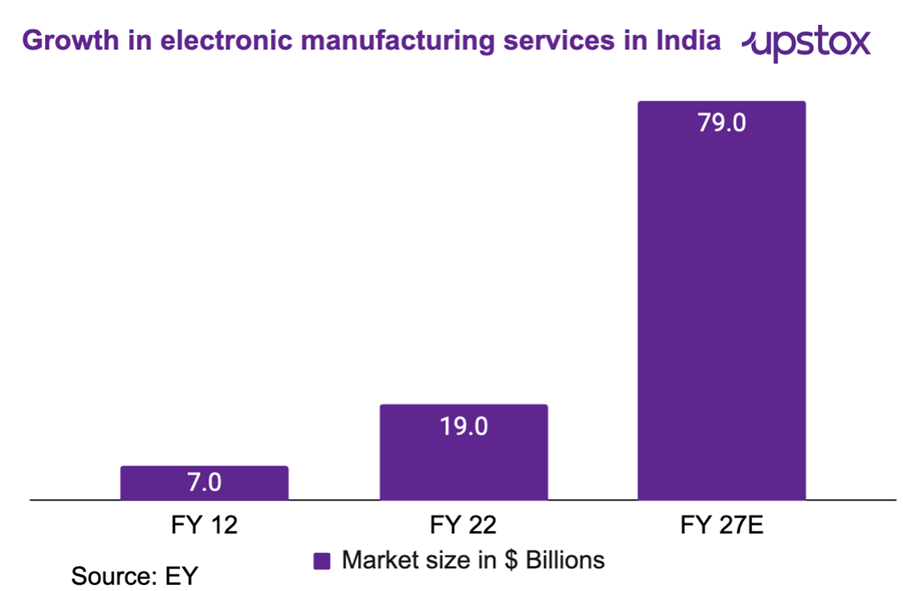
India has also made its presence felt globally as evidenced by a significant jump in certain exports.
India's share in world exports (Ex-China)
| India's share in world exports (Ex-China) | CY13 share (%)* | CY23 share (%)* |
|---|---|---|
| Smartphones | 4% | 12% |
| Room ACs | 5% | 12% |
| Fully automatic washing machines | 2% | 5% |
| Refrigerators | 2% | 5% |
| Cars | 7% | 11% |
Source: EY; *in rounded numbers
Another interesting data point is along with the government, corporations have also steadily been increasing their capital expenditure to support various initiatives.
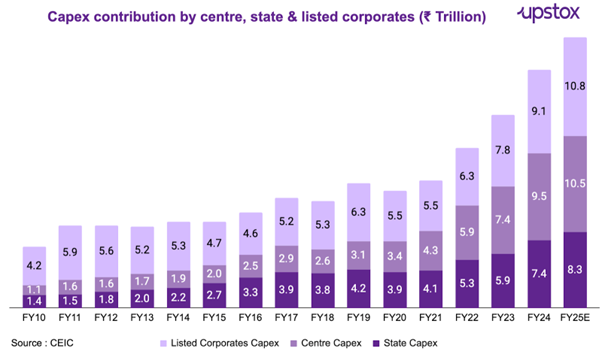
Digital India
Did you know 99% of retail payments in India are through digital mode (Source: RBI) As per the RBI, the Digital Economy is set to contribute 20% of India’s total economy in terms of GDP by 2030. (Source: RBI)
After China and the US, India is the 3rd largest digitised economy per Fortune India. All this happened because of the Digital India initiative laid out in 2015. The ‘Digital India’ initiative was launched to improve online infrastructure and increase internet accessibility among citizens (for example, linking rural areas to high-speed internet networks); thereby, empowering the country to become more digitally advanced.
What has India achieved?
E-commerce, payments, food delivery, movie tickets, vaccination, travel, tourism and many other sectors have been thriving because of the Digital India initiative.
Overall, the Internet economy has grown from 0.5% of the GDP in 2010 to ~10% of the GDP by 2023 and is expected to reach 20% by 2030 as per Ministry of Electronics & Information Technology and RBI estimates.
PM Gati Shakti Mission
The government launched the Prime Minister Gati Shakti in 2021, also known as the National Master Plan for Multi-modal Connectivity (IAST Pradhānmantrī Gatī Shaktī). The scheme provided a digital platform to bring 16 ministries together. It helped connect vital areas like rail and road, among others for integrated planning and implementation of various projects.
What has India achieved?
Construction of national highways (NH) touched around 12,300 km in 2023-24, almost 34 km per day. While pace of highway construction has been steadily increasing over the past decade, this scheme has helped smoothen the process to help maintain if not boost the pace.
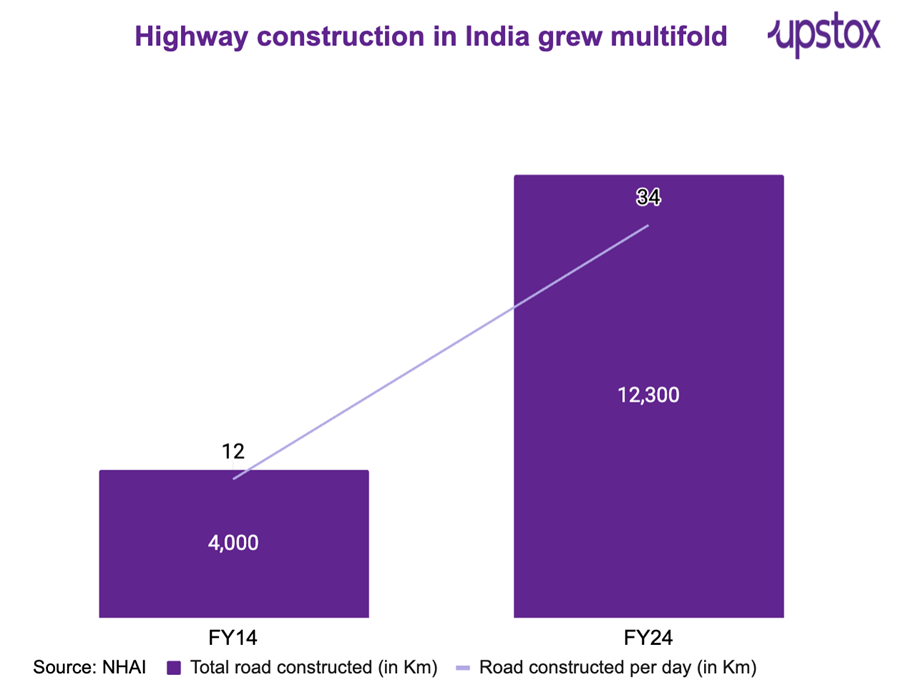
India’s ranking in the World Bank’s ‘Logistics Performance Index', improved from 54 in 2014 and 44 in 2018 to 38 in 2023.
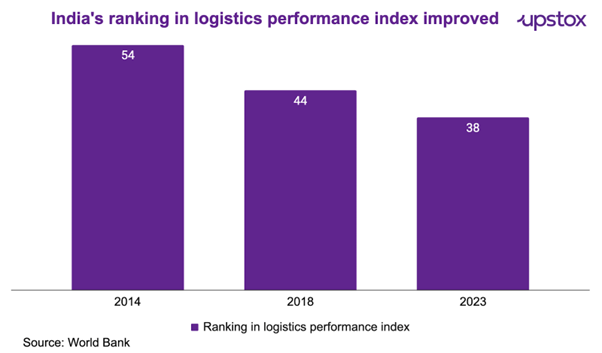
As of Oct-24, projects worth ~₹15.3 lakh crore have been already announced which can lead to the value creation of ~₹30 lakh crore considering the GDP multiplier factor of 2.5x as per Niti Ayog estimates.
PM Awas Yojana
What has India achieved?
The number of affordable housing units completed by the government has tripled from FY20 to FY24.
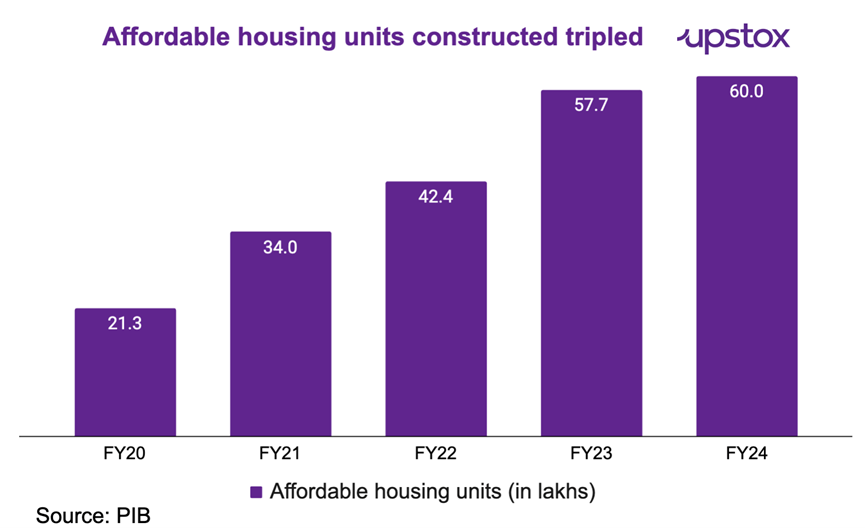
Ayushmann Bharat Yojana
The Ayushman Bharat Pradhan Mantri Jan Arogya Yojana (launched in 2018) which is the largest health assurance scheme in the world and aims at providing health cover of ₹5 lakh per family per year to 10 crore families.
What has India achieved?
Indians used to spend almost 62% 2014 of their healthcare expenditure on out-of-pocket expenses rather than relying on insurance coverage. This came down to 40% by 2022 as per the latest data available.
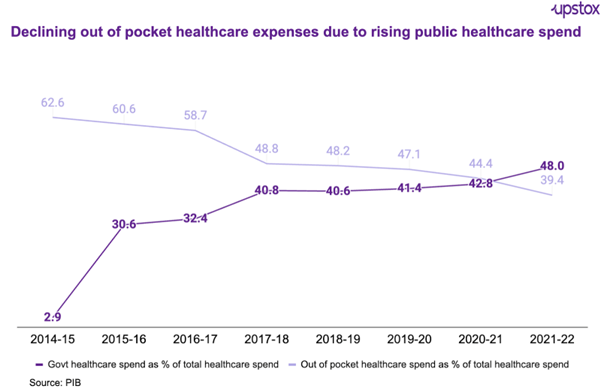
In summary
These schemes focused on infrastructure, digitisation, financialisation, and housing have created a sustainable environment and played a crucial role in uplifting the economy through various budgetary measures.
About The Author
Next Story
